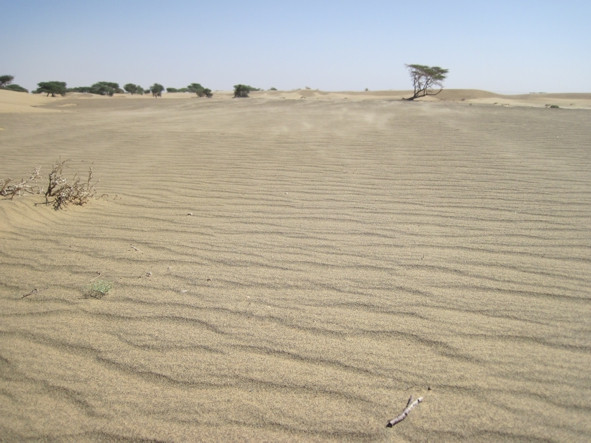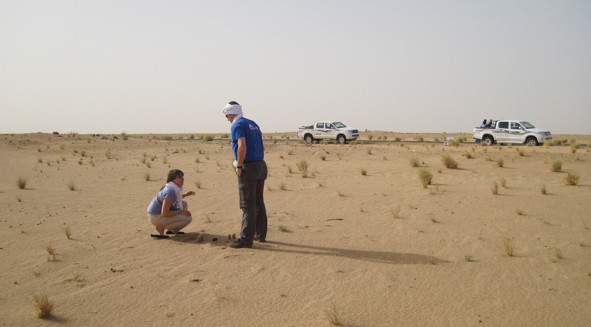
One of the many different Saharan dust sources in Mauritania; streamers of dust are blown off and perpendicular to the sand ripples
Each year, about 180 million tons of dust are blown westward from the northwest African coast (Yu et al., 2015). Using an array of moored sediment traps anchored at 4,000-6,000 meter on the seafloor of the Atlantic Ocean, we study the spatial and temporal variability of dust that is deposited in the ocean. In addition, we sample the atmosphere during ship cruises with dust collectors standing on deck. The shipboard dust collections are snapshots in time but with the moored sediment traps and dust-collecting buoys we are establishing time series of dust transport and deposition.
In addition to Saharan dust, there are also large amounts of sediments flown into the equatorial Atlantic Ocean through discharge of South American rivers like the Amazon and Orinoco. Potentially, these sediments can also reach the sediment traps along our transect of instruments between Africa and the Caribbean.
There are several ways to characterize these different sediments and a much-used approach is by studying the chemical composition of the material of interest and then compare this to well-known composition of various potential source areas. Michèlle went to the Rosenstiel School for Marine and Atmospheric Sciences in Miami, USA to work with Ali Pourmand and Arash Sharifi and analyze the radiogenic isotopes of strontium (Sr), neodymium (Nd) and hafnium (Hf) and a suite of rare-earth elements (REEs). By comparing the chemical composition of a suite of samples collected along a source-to-sink transect starting on the African continent and ending on Barbados, with published compositions of Amazon-River samples, Michèlle and colleagues managed to undisputably demonstrate the Saharan origin of samples collected by the marine sediment traps.

During a field trip to Mauritania in 2009, a number of potential sources of Saharan dust were sampled. We can now compare these samples to those collected at sea.
Publication details: Michèlle van der Does, Ali Pourmand, Arash Sharifi & Jan-Berend Stuut (2018) North African mineral dust across the tropical Atlantic Ocean: insights from dust particle size, radiogenic Sr-Nd-Hf isotopes and rare earth elements (REE) Aeolian Research 33, p 106-116 https://doi.org/10.1016/j.aeolia.2018.06.001